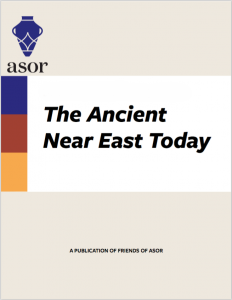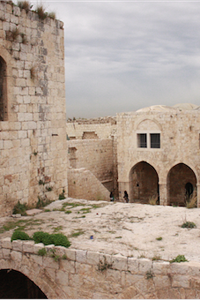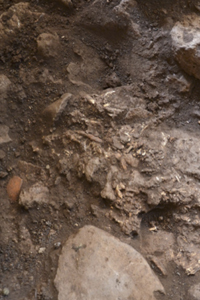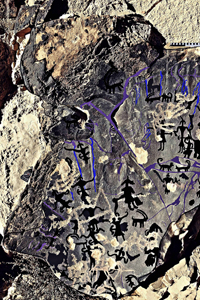

December 2017
Vol. 5, No. 12
ANET December issue e-book:
- “Child Sacrifice in Ancient Israel” by Heath D. Dewrell
- “Visitors from the Intermediate Bronze Age? Crescent Headed Figures in Negev Rock Art” by Lior Schwimer and Yuval Yekutieli
- “Of Stones and Social Complexity: The Shamir Dolmen Field and the Intermediate Bronze Age” by Uri Berger and Gonen Sharon
- “A Magnificent Manor: Majdal Yaba: A Fortified Ottoman and British Mandate Period Manor House in Central Israel” by Itamar Taxel and Tsvika Tsuk
 A Magnificent Manor: Majdal Yābā – A Fortified Ottoman and British Mandate Period Manor House in Central Israel
A Magnificent Manor: Majdal Yābā – A Fortified Ottoman and British Mandate Period Manor House in Central Israel
By Itamar Taxel and Tsvika Tsuk
Within view of the modern town of Rosh Ha-‘Ayin is a site that was continuously inhabited between the Iron Age II and the British Mandate. Majdal Yābā is located on a hill at the western fringes of Samaria, overlooking the coastal plain and the eastern basin of the Yarqon River. Thanks to the impressive and well-preserved remains of a fortified monumental structure on the summit, it is visible from a distance. The site provides a unique view on not only the landscape but upper class Ottoman period society.
READ MORE
 Of Stones and Social Complexity – The Shamir Dolmen Field and the Intermediate Bronze Age
Of Stones and Social Complexity – The Shamir Dolmen Field and the Intermediate Bronze Age
By Uri Berger and Gonen Sharon
Dolmens – megalithic stone tombs – are among the earliest archaeological features documented in the Levant, first reported in 1817. In 1850 the French researcher De Saulcy first used the term “dolmen” to describe the megaliths at Adeimeh in Jordan. During the 1880s, C.R. Conder of the Palestine Exploration Fund laid the foundation for dolmen studies, mapping, describing, and drawing dozens of them from Syria, the Jordan Valley, the Upper Galilee, and the Golan Heights.
READ MORE
 Visitors from the Intermediate Bronze Age? Crescent Headed Figures in Negev Rock Art
Visitors from the Intermediate Bronze Age? Crescent Headed Figures in Negev Rock Art
By Lior Schwimer and Yuval Yekutieli
The Negev is renowned for its countless examples of rock art, which date from remote proto-history until the modern period. Many of these are difficult to date, but new research suggests that a special class dates to the still enigmatic mid-third millennium BCE. Do they indicate something unexpected about that society?
READ MORE
 Child Sacrifice in Ancient Israel
Child Sacrifice in Ancient Israel
By Heath D. Dewrell
“For the Judahites have done evil in my sight”—an oracle of Yahweh—“they have set their abominations in the House over which my Name is invoked, defiling it. They build the shrines of the Topheth, which is in the Valley of the Son of Hinnom, to burn their sons and their daughters in the fire—which I did not command, nor did it arise in my mind.” (Jeremiah 7:30–31)
Among the many accusations that the prophets of the Hebrew Bible level at their contemporaries.

 A Magnificent Manor: Majdal Yābā – A Fortified Ottoman and British Mandate Period Manor House in Central Israel
A Magnificent Manor: Majdal Yābā – A Fortified Ottoman and British Mandate Period Manor House in Central Israel

